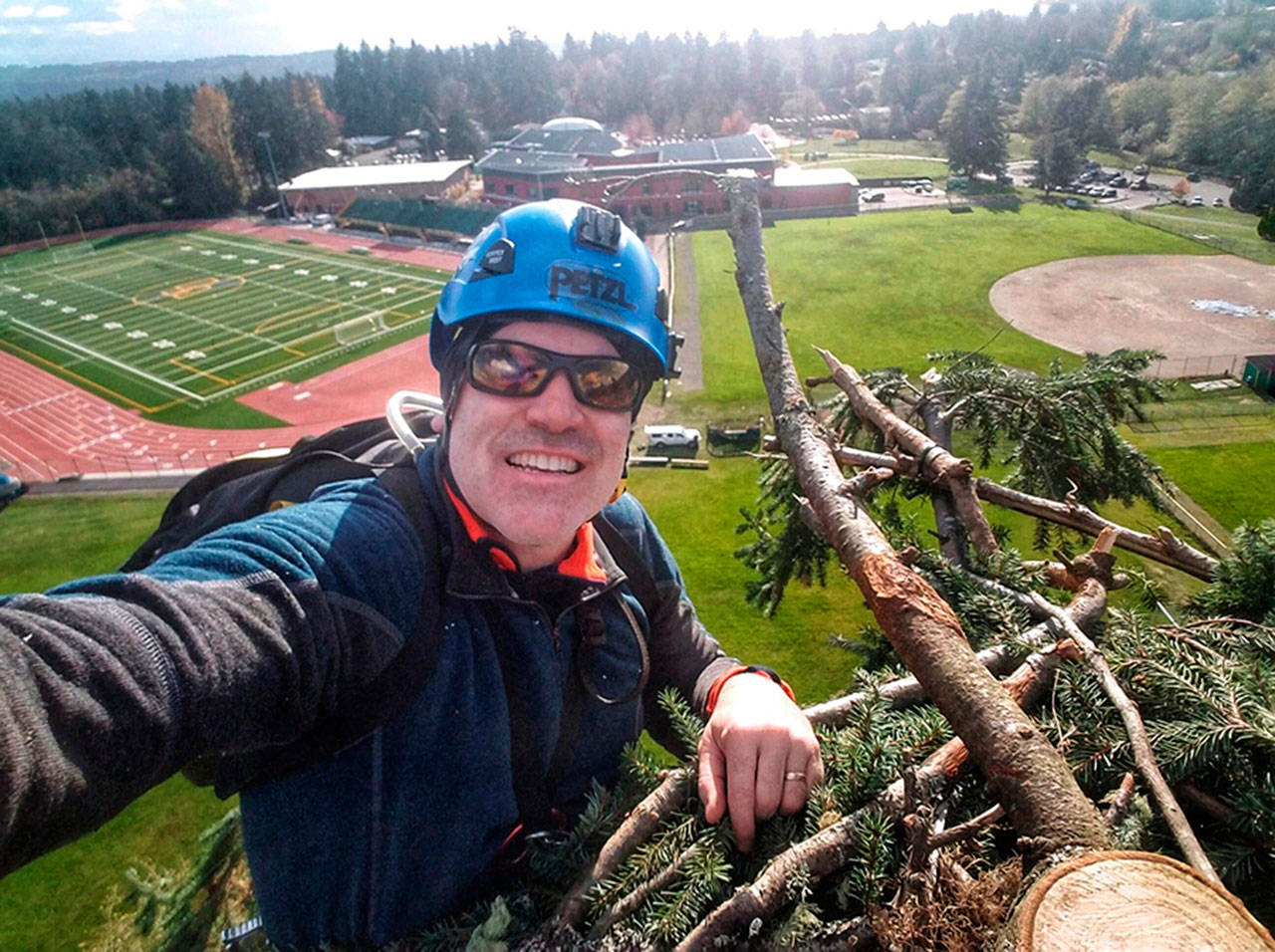Last week, a family home close to the high school and new track and field was relocated — but the movers were not your everyday house movers because the family is no ordinary family.
Tom Otto and Shaun Sears — both certified arborists and experienced tree climbers who work on environmental service projects throughout the Northwest — were brought to the island by the school district’s construction manager, Brandy Fox, to “relocate” an osprey nest that had been built atop one of the light posts along the high school’s track.
“There was no nest there initially,” Fox said of the high school’s newest neighbors. “But on the first day of planning [for construction of the new track and field] last spring when we were out on the field, I looked up and there was a giant osprey sitting on the pole, and I knew what was going to happen. Sure enough, within a week the nest was built.”
Osprey nests, as opposed to eagles or any of the other large raptors native to the Pacific Northwest, can be problematic if they are near public places because they have an affinity for the tops of very tall things and are not particularly discriminating as to what those tall things are — power poles, cellular towers and light poles are as likely nest spots as trees. Combined with the use of large sticks and branches that can fall and the osprey’s sanitary nursery habits — they will not poop in the nest and even the babies are taught to relieve themselves over the sides — an active nest is a potential hazard to people who might be in the area, as well as at risk for catching fire (in the case of those on cell towers or light poles).
The Vashon nest sat on top of a field light post that towers over the high school side of the path that runs between McMurray and VHS. And since osprey are protected under the Migratory Bird Treaty Act, a permit was required from the Washington State Department of Fish and Wildlife (WDFW) to relocate the nest — which was granted for when the osprey family left the nest and headed south for the winter. That just happened within the past couple of weeks.
“They were there through all of construction,” Fox said. “And right up through the ribbon cutting.”
Enter Otto and Sears.
This brothers-in-law tree-climbing team is not new to the business of relocating osprey nests or habitat restoration. Otto has worked for the city of Olympia for years, identifying, planning the restoration of and restoring wildlife habitat. He and Sears have operated Canopy Conservation, a business with the focus of osprey nest relocation, and have also worked extensively with the WDFW on “nest cam” projects. Currently, the two are busiest with their nonprofit project, Canopy Cat Rescue, which has them rescuing cats that have climbed trees and are unable — or more to the point, unwilling — to climb down.
“Almost every tree climber in the course of his or her career has been asked to rescue a cat at some point,” Otto explained. “Fire departments tend to be too busy with actual fire and rescue business to respond to cats in tree calls any more, and we were getting about half a dozen calls a year.”
That half dozen calls a year has exploded into roughly 500, state-wide, with an Animal Planet TV series about the pair helping to spread the word. Otto added that they receive so many cat rescue calls now that it is keeping Sears busy full time, and they have rescued a few cats on the island.
But last week both were able to take some time away from retrieving sky-high kitties to relocate the VHS osprey nest, first climbing, and topping, a 125-foot Douglas fir nearby, but farther from the path than the light post. The tree was topped both to provide a flatter, broader platform of sorts for a new nest, but also to provide the birds the material they need to build again. Then the old nest was dismantled, with pieces of it left on the new tree “platform” in the hopes that the osprey pair will recognize them and rebuild in the new spot.
“If this pair goes for the new location, we’ll be 100 percent successful in our relocation efforts,” Otto said. “This is the third school district we’ve worked with. Mercer Island was the last one. That pair relocated successfully and and have been coming back for years.”
The work took about four hours, start to finish, and was observed by students from a couple of classes at the high school.
“It will be fun for the school to watch and see what happens in the spring when this pair comes back,” Otto mused. “When they return and see their old nests gone, sometimes they’ll rebuild in the same place but more often will find a new spot.”
Follow Otto and Sears’ adventures in cat rescuing at facebook.com/canopycatrescue.



